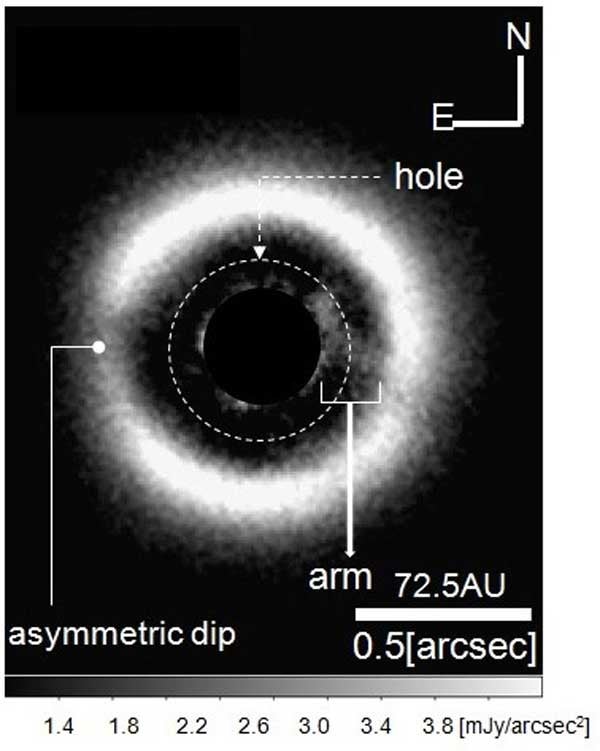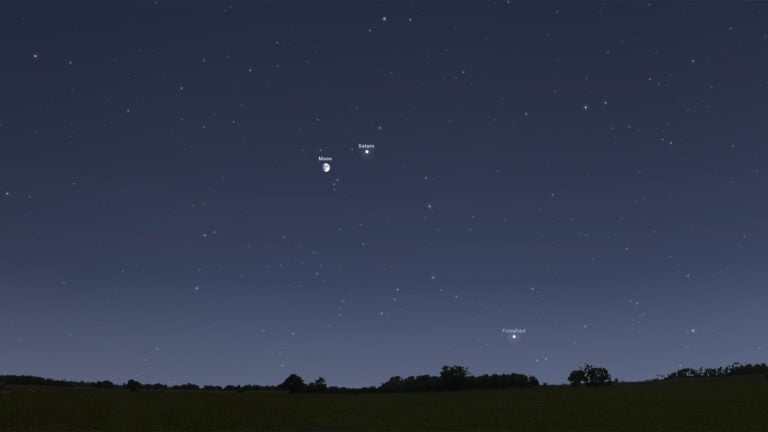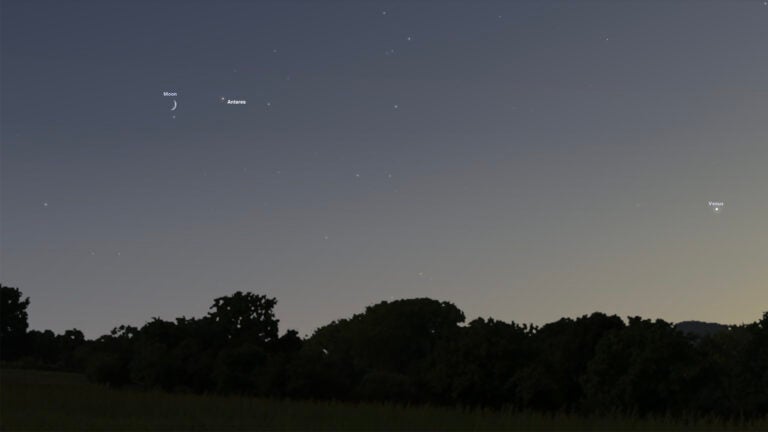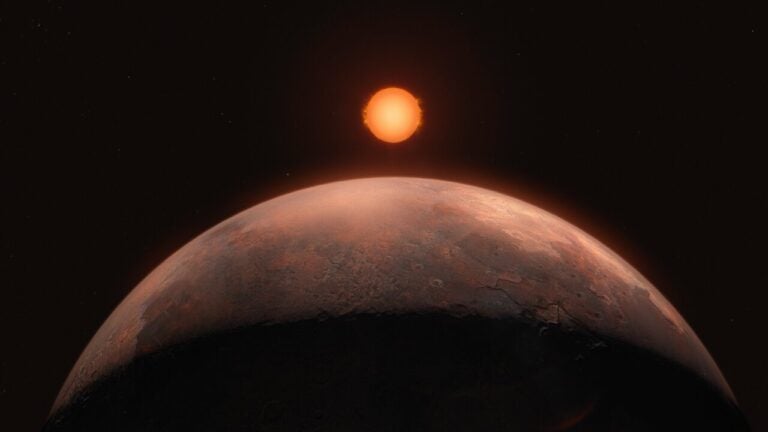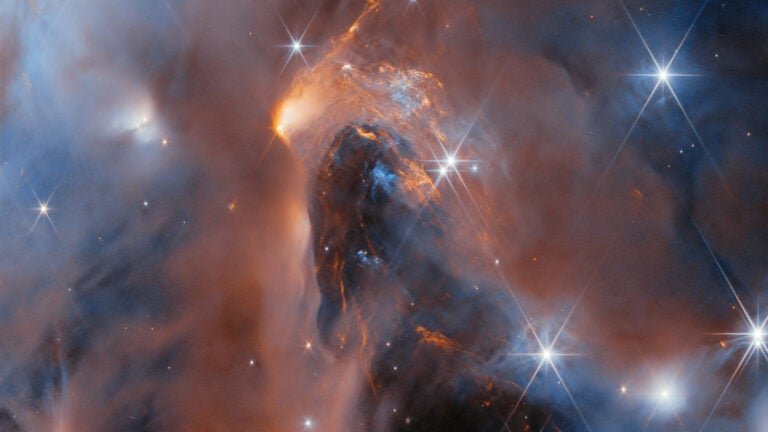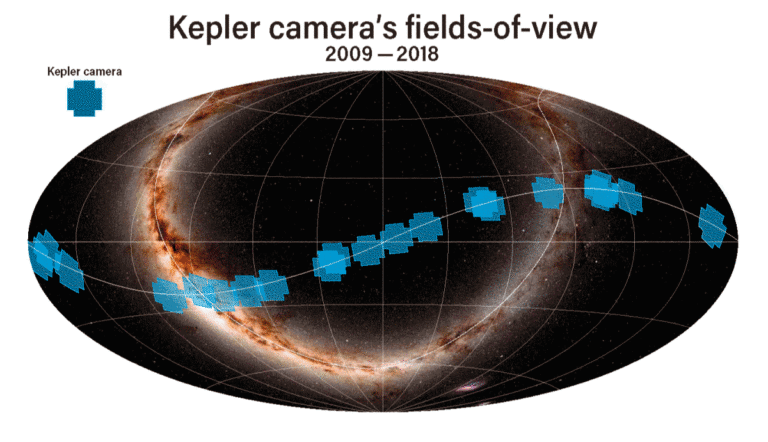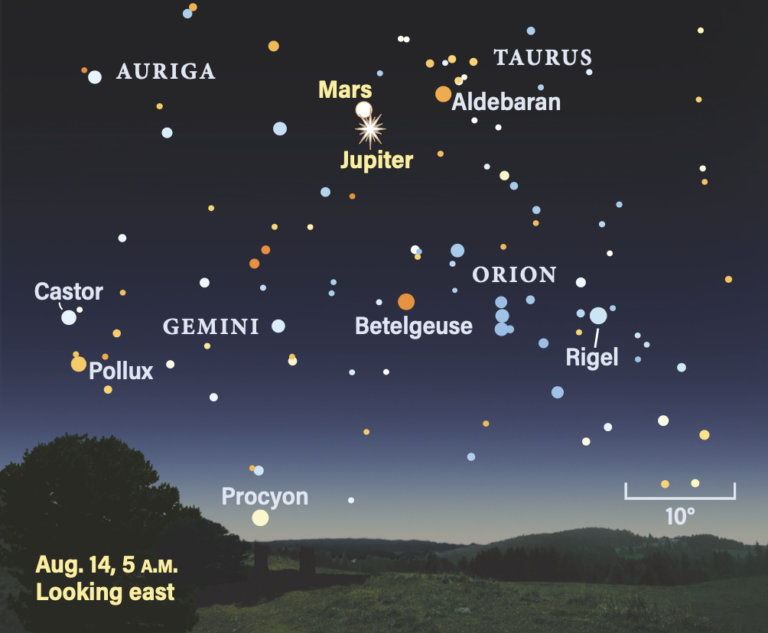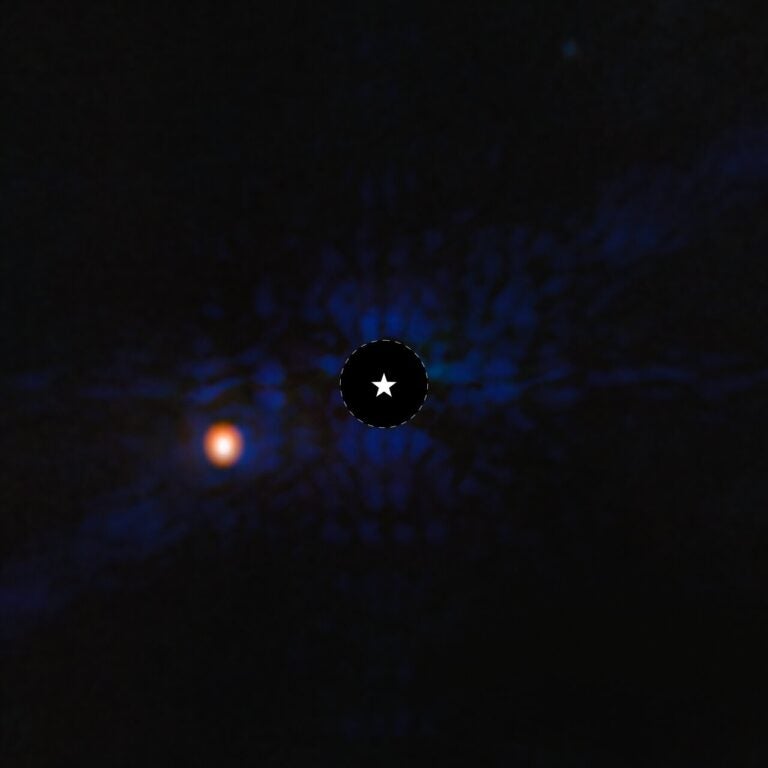Research over the past two decades has confirmed that new stars are often surrounded by disks of dense gas and dust — protoplanetary disks — from which planets form. A central star enters an active phase of planet building when it is a few million years old. During this period, newborn planets may deplete some of the gas and dust in the disk, producing a hole within it, although the outer ring remains. However, the debatable origins of the hole require direct observation to confirm this process.
Direct imaging of the structures that indicate planet-building inside of the hole have rarely occurred — until now. The current team’s research, a part of the Strategic Explorations of Exoplanets and Disks with Subaru (SEEDS) Project, is filling in the observational gaps in this relatively unexplored area.
The team used the high-resolution infrared camera High Contrast Instrument for the Subaru Next Generation Adaptive Optics (HiCIAO) mounted on the 8.2-meter Subaru Telescope in April 2012 to observe the young star J1604, which has a mass similar to the Sun’s. It is located in the Upper Scorpius star-forming region at a distance of 470 light-years, and it is estimated to be 3.7 million years old. The researchers captured a high-resolution — 0.07 arcsecond — near-infrared image of its protoplanetary disk, which shows dust particles that scatter the light from the central star.
The disk has some interesting features: a large hole with an asymmetric dip in the disk and a curved arm extending over the hole. This is the first vivid infrared image of such an arm in observations of the disks around young stars, and it also marks the first detection of an arm of dust that could lead to the formation of Earth-like rocky planets. The arm emerges from the inner edge of the western side of the disk, begins to extend inward, and then curves to the northeast. Based on detailed modeling, the team estimates that the radius of the disk’s inner edge is 63 astronomical units (AU, or the average distance between Earth and the Sun), its inclination is 10°, and the length of the arm is 50 AU. Their measurements of the surface brightness of the gap show that it drops by a factor of five when compared with the rest of the disk.
Characteristics of the hole in the disk and the arm over it indicate the possible presence of unseen planets within the hole. The width and depth of the observed hole conform to the size of a hole that planets would create according to current theories of planet formation. The researchers’ calculations suggest that the hole in this disk might mark the presence of at least one planet at 40–50 AU from the central star. Current theories also predict that the gravity of a planet could produce a curved arm in a disk. Because the shape of the arm in the Subaru Telescope image shared features in line with theoretical predictions, the team concluded that unseen planets could explain its structure. Overall, these findings identify constraints on planet formation at certain distances from the central star.
The high-resolution image from these scientists’ research at Subaru Telescope clearly illustrates the dynamic context in which planets are born. These kinds of detailed images of a face-on disk become perfect laboratories for astronomers to test and refine their theoretical models of planet formation.


